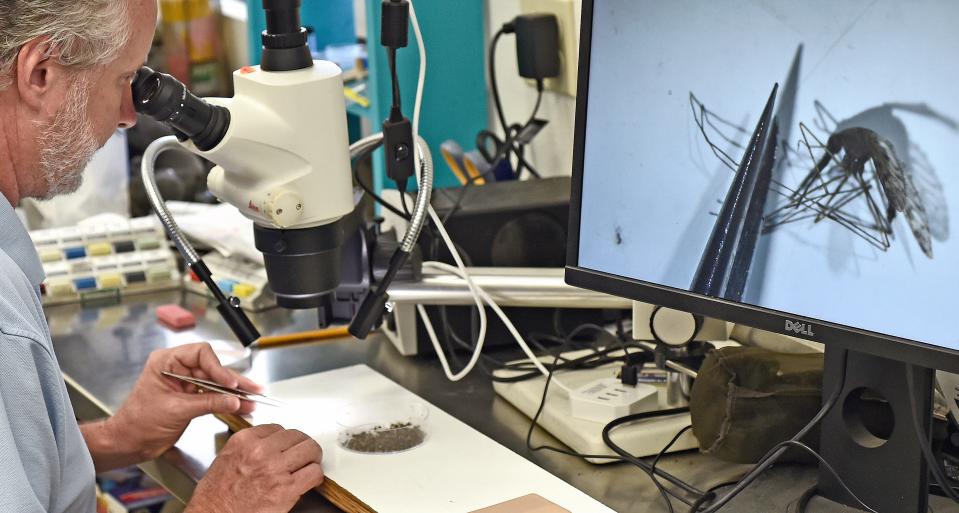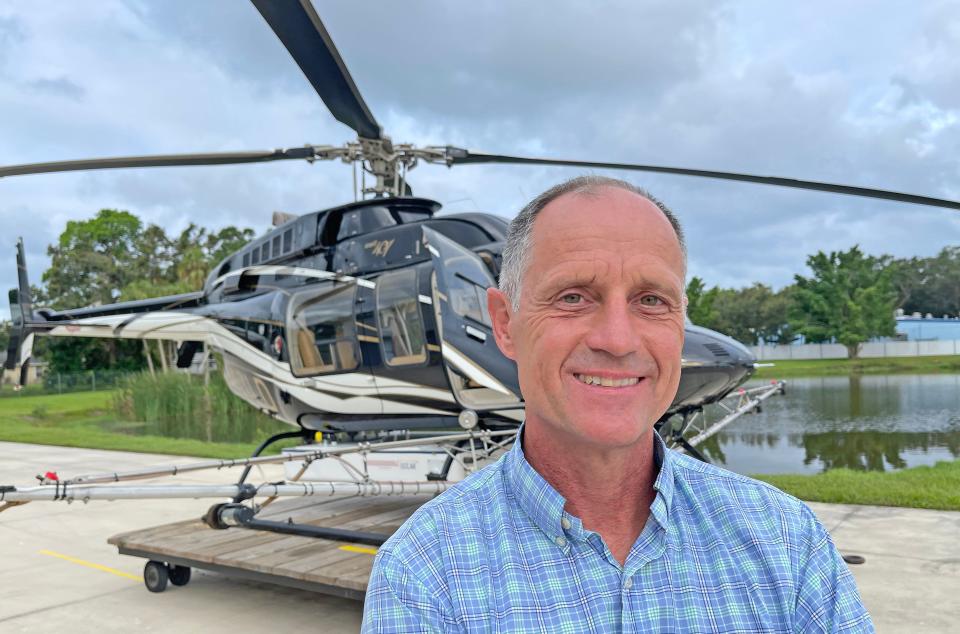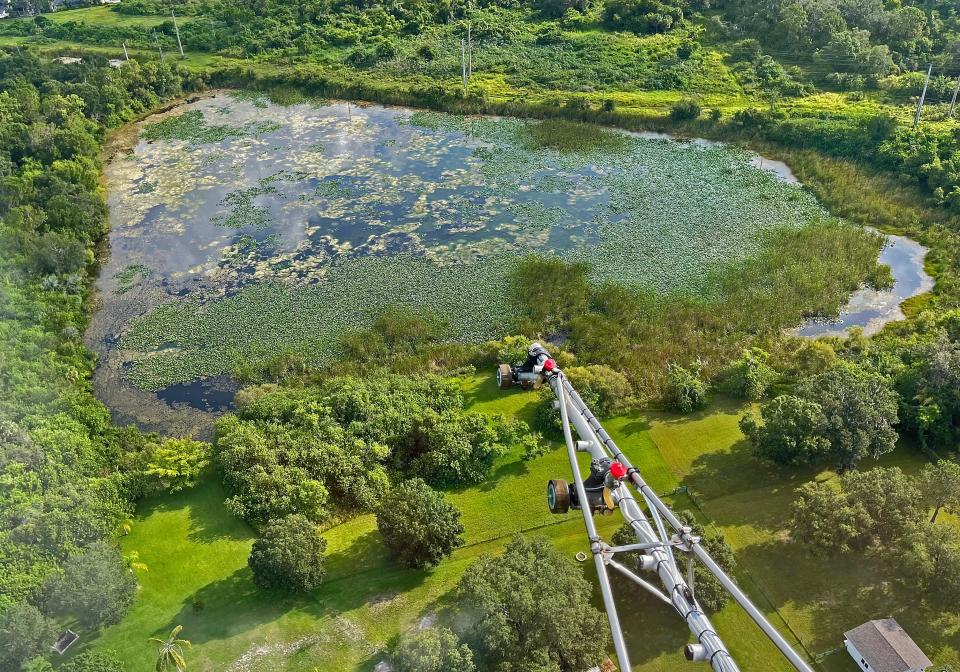Malaria threat under attack by air and ground from Sarasota, Manatee mosquito control
Christopher Lesser, the director of Manatee County Mosquito Control District, said state health officials called him on May 23 informing him of the first case of locally acquired malaria in the Sarasota-Manatee area in decades.
“At first we thought, this has got to be a mistake,” he recalled.
After learning the news, Lesser directed a pilot to go on a mission that night. From a Bell 407 helicopter, he sprayed insecticides in southwestern Manatee County, which is near where the case occurred in Sarasota County.
For the last five weeks, Sarasota and Manatee County mosquito control staff have been hard at work trying to stop the spread of malaria by Anopheles mosquitoes.
Since the first case was reported the week of May 21-27, a total of four cases have been confirmed in Sarasota County by the Florida Department of Health. These cases were locally transmitted, which means that the individuals contracted malaria from a mosquito or mosquitoes in the Sarasota area. Wade Brennan, Sarasota County Mosquito Management Services manager, said health officials are investigating a possible fifth case.
Brennan explained the county’s strategy for addressing the malaria outbreak at a Tuesday press conference, and Manatee County’s top mosquito control official did the same in an interview with the Herald-Tribune. Their practices and methods are summarized below.
Spraying the “area of concern” with insecticide

Brennan said Sarasota County has been conducting spray missions throughout the “area of concern,” which is the Desoto Acres and Kensington Park area. Workers are treating every woodland, swamp and permanent body of water in these areas with insecticides that kill adult mosquitoes and larvae. They are using both trucks and aircraft to spray the areas.
Brennan said that when the first case occurred, they were focused on a specific neighborhood and went door-to-door, letting residents know what was happening. The “area of concern” has since expanded, so the county sent a notification to alert everyone in the area about the situation.
They also have started aerial spray missions outside the area. Their last two missions were over a mile away from the farthest south person who contracted malaria, Brennan said.

Lesser said the Manatee County Mosquito Control District – which is a separate organization from Manatee County government – is using helicopters to spray an area that extends from Sarasota Bay in the west to Interstate 75 in the east and from University Parkway to roughly three miles north. They have carried out three of these missions since the first case was reported, and they plan to a fourth Thursday night.
“With aircraft, we can treat a bigger area faster and more effectively,” he said.
He noted that the district is using insecticides that were approved by the Environmental Protection Agency for “this very purpose,” which is public health concerns.
Trapping mosquitoes
Lesser said the Manatee County Mosquito Control District has been trapping adult Anopheles mosquitoes a few nights a week, but he noted that they haven’t caught many – only around 50 so far. This is a sign that the population isn’t as large as it sometimes can be in the summer.
The district has traps that use ultraviolet light to attract mosquitoes. It also has “resting boxes,” which are square boxes where mosquitoes come to rest.

Lesser said they put the mosquitoes they trap in vials and send them to the Centers for Disease Control and Prevention for testing. None of the mosquitoes have tested positive for malaria.
Sarasota County has also been sending mosquitoes to the CDC, and three were positive, Brennan said. Those three came from the same wooded area.
Previously: Health officials ask Floridians to take precautions as malaria count rises in Sarasota
More: Malaria symptoms to watch for and 11 other things to know about the disease
This article originally appeared on Sarasota Herald-Tribune: Florida malaria battle in Sarasota being fought by mosquito control

